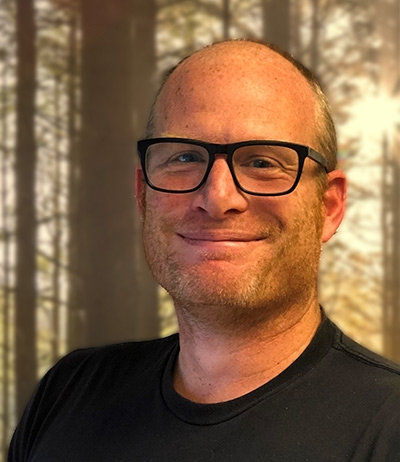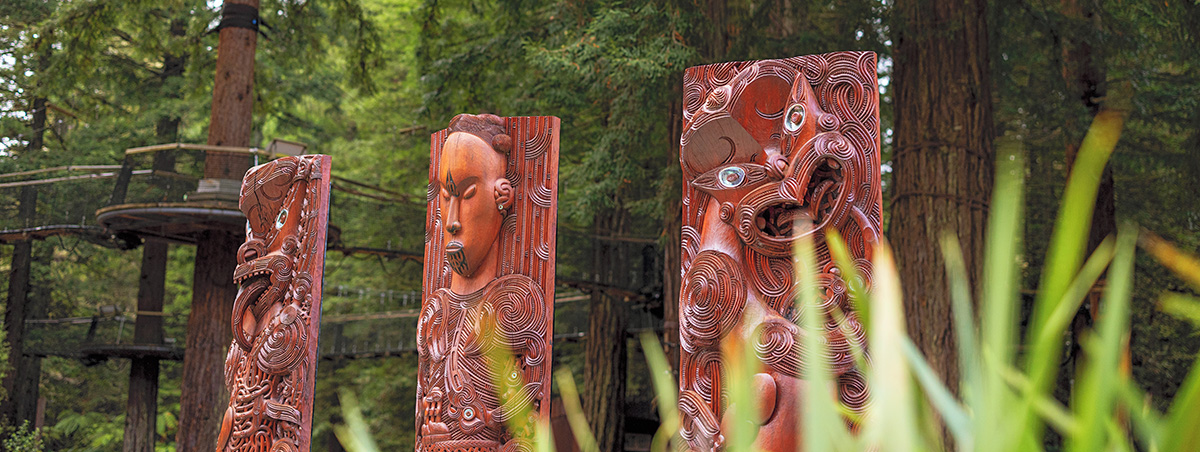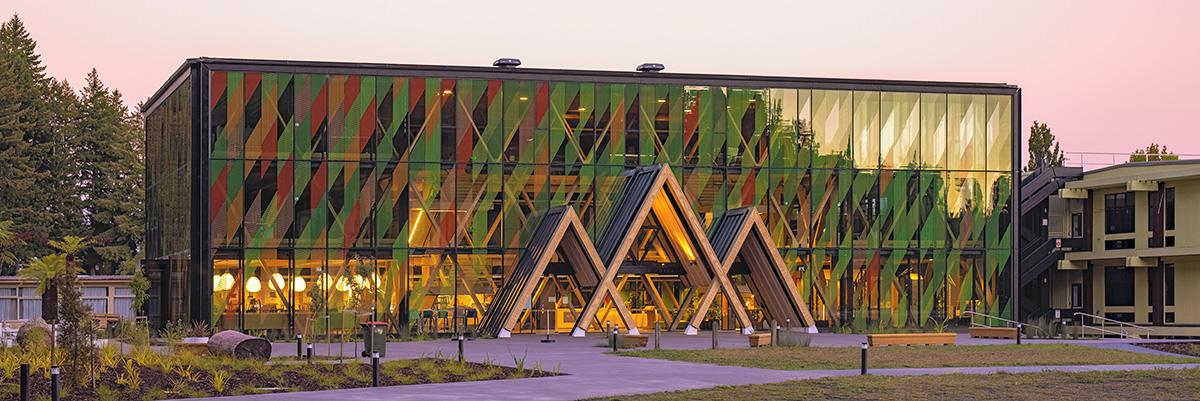
It may abound with natural wonders while being rich in culture, but Rotorua has much more to offer. Working in partnership with researchers, businesses and local iwi, RotoruaNZ, is looking to the future, as the economic development agency’s CEO, Andrew Wilson, reveals.
Partnering with Māori

Chief Executive, Rotorua Economic Development
As chief executive of RotoruaNZ, I’m privileged to lead an organisation that thrives on collaboration, innovation, and a deep respect for the cultural fabric that makes our region unique. Rotorua’s economic success isn’t measured solely in numbers – it’s also reflected in how we work alongside Māori and iwi to realise shared aspirations.
Our Rotorua Forest Futures Action Plan is a project of which I’m particularly proud. Co-developed with local iwi, forestry leaders, and organisations including Whenua Oho, this plan is a testament to what can be achieved when we align economic initiatives with Māori values. Rotorua’s forestry sector has always been a cornerstone of our economy, but it’s essential that we also look forward, embracing sustainability and climate resilience.
Central to the plan is the role of Māori. Iwi have significant ownership and influence within this sector, and their expertise ensures our approach is both innovative and respectful of the land. Whether it’s planting diverse species to enhance biodiversity or fostering a circular bioeconomy, this plan represents a future where forestry not only drives economic growth but also creates meaningful opportunities for Māori.
Another standout project has been our partnership with the Peka Lands Trust. More than an industrial park, this development is the realisation of a 40-year vision. When the trust approached us with their plans to transform 13 hectares of harvested pine forest into a thriving industrial hub, it was clear this project aligned with our aspirations for the Rotorua economy.
Through our support in securing $6 million from the Regional Strategic Partnership Fund, this initiative is set to create jobs, attract businesses, and bring long-term wealth to more than 2000 beneficiaries.
Rotorua’s spa and wellness industry is a cornerstone of our economy and its success is deeply intertwined with Māori heritage. As our geothermal resources have long been a source of healing, incorporating these traditions into wellness experiences makes our destination is incomparable with any other.
Recent government investments, including into the $60 million Wai Ariki Hot Springs and Spa, reflect our commitment to growing this sector while ensuring Māori stories are at the heart of the experience.
Wellness tourism brought $277.6 million into Rotorua in 2023 alone and the potential for growth is staggering. By working alongside iwi, we’re ensuring this prosperity uplifts our community while sharing authentic Māori culture with the world.
While large scale initiatives are vital, at RotoruaNZ we’re equally passionate about supporting smaller ventures that showcase local charm. The Kārearea Nest, for instance, is a secluded retreat that blends luxury with a deep connection to the land, offering visitors an authentic, tranquil experience.
Supporting such ventures as those mentioned aren’t just about economic diversification, it’s also about giving visitors a taste of what makes Rotorua special, all while facilitating meaningful relationships and partnerships with various stakeholder groups.
Throughout my time at RotoruaNZ, we’ve prioritised collaboration with iwi and Māori groups as the foundation of our economic strategies. These partnerships don’t just tick boxes – they align our goals as we share knowledge and create initiatives that benefit everyone.

The Rotorua Forest Futures Action Plan, the Peka Lands Trust development, and the growth of the spa and wellness sector are just a few examples of what we are achieving together. When we integrate Māori perspectives into our plans, the outcomes are richer, more sustainable and more inclusive.
Rotorua’s identity is inseparable from its whenua and people and it’s my role as chief executive to ensure our economic development reflects this. By fostering partnerships that celebrate and elevate Māori values, we’re building a future that honours our past while creating opportunities for generations to come.
I often say that Rotorua’s greatest strength is its people and that’s never more evident than in the collaborations we’ve fostered with iwi. Together, we’re shaping the region’s economic future while creating a place that embodies innovation, resilience and a deep respect for the qualities that make Rotorua unique.
Collaboration key to innovation
Along with my team, I recently spent some time working from Scion’s Rotorua campus. This confirmed to me what an amazing and progressive world-renowned research hub we have right here on our doorstep. Businesses work together collaboratively and with other organisations across the Bay of Plenty, around New Zealand and internationally – it’s a bustling centre of innovation with state-of-the-art facilities and plans in place to further enhance its capabilities.
Currently, there are 42 tenants operating from the Scion campus, known as Te Papa Tipu Innovation Park. The park sits within Te Mingi, an area owned by Ngā Hapū e Toru (Ngāti Hurungaterangi, Ngāti Taeotu and Ngāti Te Kahu). Scion aims to build on this and welcomes potential investors to further enable strategic science, research and development. We know Rotorua will benefit from the realisation of this goal through the creation of jobs, research funding and collaborative successes that attract national and international interest and recognition.

Businesses operating from Scion’s campus regularly collaborate to drive innovation across the science and forestry sectors. For many of them, co-location has led to growth. Cetogenix provides a solid example of this.
Launched in 2022, Cetogenix has strong ties to Scion. The organisations have a memorandum of understanding to secure grants to scale up Cetogenix’s technology and collaborate on research and development. This partnership has brought world-leading science out of the laboratory and into the real world. Cetogenix is based at Te Papa Tipu Innovation Park, reflecting the belief that science/commercial partnerships accelerate innovation.
During my time at the campus, I learnt Scion regularly collaborates with other Bay of Plenty businesses too, including Zespri, Upflow and Timberlands. Scion worked with Zespri to create a bio-based and compostable spife – a spoon/knife utensil for cutting, scooping and eating kiwifruit – using kiwifruit residue, and is supporting Upflow on work to make livestock feed from greenhouse gases.
Scion partnered with the Rotoiti 15 Trust on the Department of Conservation-funded Te Rātā Whakamaru project, with the goal of better understanding myrtle rust and assessing tree resistance to the disease. Scion has worked with NIWA to study water movement and storage in planted forests, and, outside the Bay of Plenty, with Paeroa-based Agrisea to turn seaweed waste into valuable nanocellulose for various applications. It also hosts scientists from biotechnology start-up Jooules, which is exploring ways to create protein from CO2 emissions.
Scion also shares knowledge with other industry organisations. Timberlands, for example, has been using the findings of our fertiliser trials in the long-standing Puruki Experimental Forest to work toward its goal of doubling productivity in Kaingaroa Forest during the next 30 years. We are also running research projects with Timberlands in the Kaingaroa Forest.
Scion has long been involved with a wide range of forestry industry stakeholders and wood processing and manufacturing companies. Its research has underpinned the success of the forestry sector, which continues to invest in Scion’s work. Research management company Forest Growers Research (FGR) represents one such investment. It supports and works with Scion across various research projects such as Extreme Wildfire, focused on better understanding wildfire behaviour to improve predictions, and Resilient Forests, which looks at how to help forests become more resilient in a changing climate.
All of these partnerships highlight opportunities to attract new businesses into Rotorua and showcase Scion’s position as New Zealand’s leading institute in forestry, industrial biotechnology and advanced manufacturing. It’s great to see local businesses taking such an active role in developing a circular bioeconomy for Rotorua and the rest of New Zealand, given that the international renown Scion receives often leads to global partnerships.
Scion’s long term goal is for its campus to be a world-class hub for innovation, collaboration and scientific advancement.
Public engagement spaces will also be created to demonstrate the impact of Scion’s work, heritage and culture in partnership with Ngā Hapū e Toru, and to build capability through engagement with students and education and research providers as well as the general public. Independent reports value the scientific advantage this unique opportunity will provide at a potential $30 billion in additional national revenue.
Together, Scion and Rotorua will drive innovation and growth to position our city and New Zealand at the forefront of a productive, prosperous and resilient low-carbon economy supporting high value jobs and exports.

